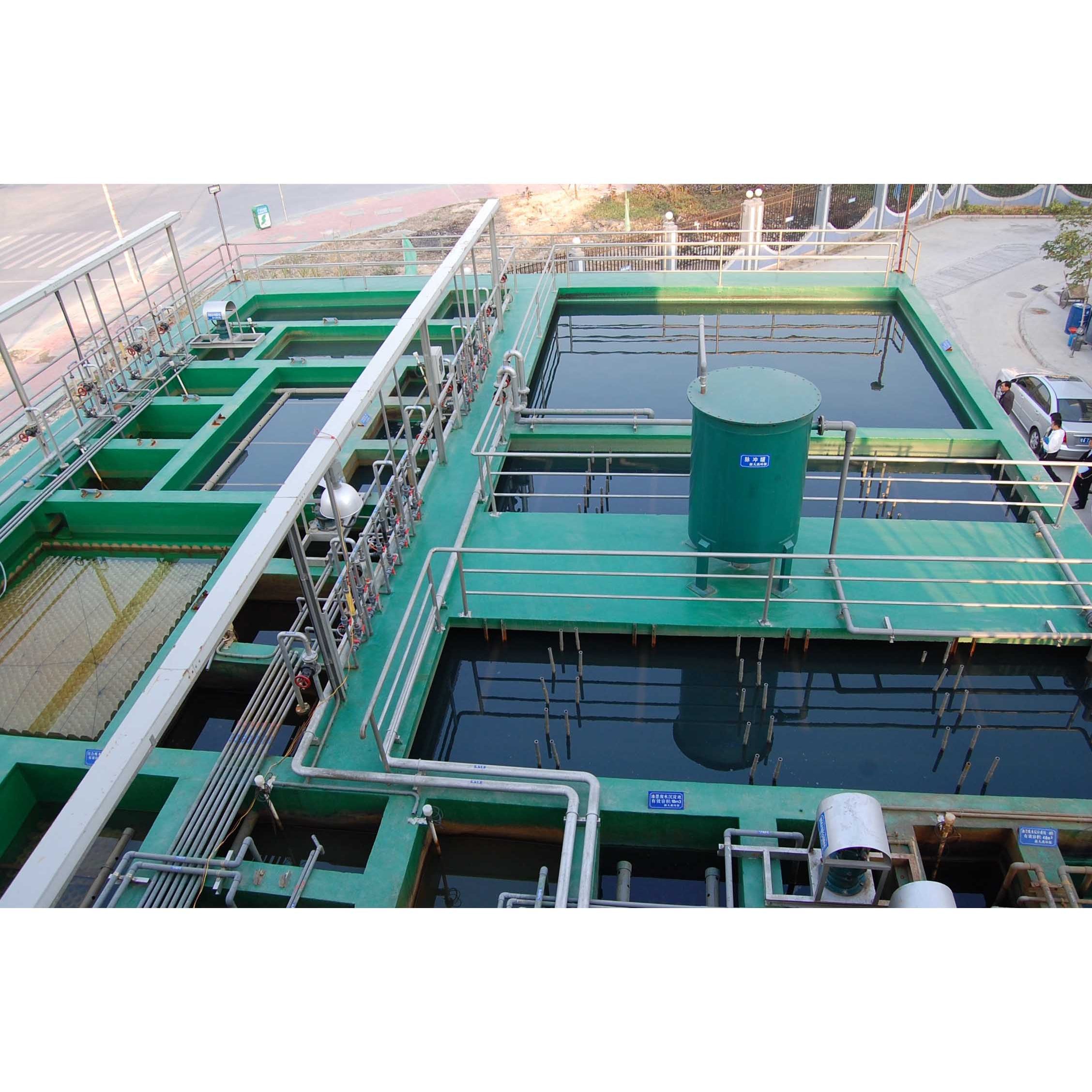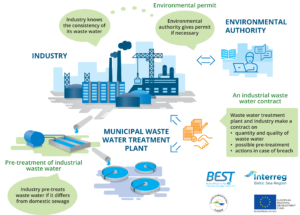Industrial Waste Water Treatment-- Enhance Effectiveness with Custom-made Water Treatment Equipments
Wiki Article
Advancements and Advances in Hazardous Waste Water Treatment Technologies
The landscape of commercial wastewater treatment is undergoing a transformative shift, driven by innovations that improve both efficiency and sustainability. Arising technologies, such as membrane bioreactors and microbial gas cells, are redefining pollutant elimination processes while adding to energy generation. Source recuperation methods are getting traction, lining up with round economy principles. As regulative criteria develop, the combination of AI and artificial intelligence right into wastewater monitoring systems promises to enhance procedures and ensure conformity. The complete implications of these improvements elevate essential questions about their scalability and long-term impact on industry methods.Review of Drainage Treatment Technologies
Wastewater treatment technologies encompass a series of approaches created to eliminate impurities from commercial effluents before their release right into the atmosphere. These innovations are crucial for maintaining eco-friendly equilibrium and guaranteeing compliance with ecological policies. The primary groups of wastewater therapy include physical, chemical, and organic techniques, each serving distinctive functions based upon the nature of the pollutants present.

Organic therapy methods utilize bacteria to weaken organic matter, making them especially efficient for organic-rich effluents. Strategies like turned on sludge and biofilm reactors harness the all-natural destruction capacities of microorganisms, leading to significant reductions in biochemical oxygen demand (BODY)
Advanced Filtering Methods
Advanced purification strategies stand for a critical evolution in the realm of industrial wastewater treatment, enhancing the efficiency of contaminant elimination procedures. Industrial Waste Water Treatment. These approaches incorporate a variety of modern technologies, consisting of microfiltration, ultrafiltration, nanofiltration, and turn around osmosis, which supply consecutive barriers for different particle sizes and chemical structuresMicrofiltration and ultrafiltration make use of membrane layer systems to eliminate suspended solids, bacteria, and larger natural particles, enhancing the high quality of effluent before further treatment. Nanofiltration links the void between ultrafiltration and reverse osmosis, effectively getting rid of divalent ions and natural substances, hence minimizing the tons on downstream processes.
Reverse osmosis supplies the highest possible level of purification by permitting just water and small particles to travel through its semi-permeable membranes, making it perfect for reclaiming high-grade water from commercial effluents. Recent advancements in membrane layer innovation, consisting of the advancement of more sturdy and fouling-resistant materials, have actually substantially improved functional efficiency and lowered expenses.
Incorporating these sophisticated filtration strategies not only boosts the overall therapy process yet also adds to sustainability efforts by allowing water reuse and resource healing in commercial settings. (Industrial Waste Water Treatment)
Organic Treatment Advancements

Additionally, the development of crafted biological systems, such as membrane layer bioreactors (MBRs), integrates biological therapy with advanced membrane layer filtering. This integration permits higher effluent quality and lowered footprint, making it ideal for space-constrained industrial facilities. Technologies in genetically engineered bacteria have actually additionally arised, boosting the biodegradation of certain contaminants, such as drugs and heavy steels, that are traditionally testing to remove.
In addition, the implementation of bioaugmentation approaches, where useful germs are introduced to boost the existing biological therapy procedures, has revealed encouraging results in boosting treatment performance. These technologies collectively symbolize a fad towards even more lasting and page efficient biological treatment methods that can adjust to the developing intricacies of commercial wastewater streams. As industries continue to prioritize ecological conformity, these biological developments will certainly play an essential role in wastewater administration.

Resource Recuperation Techniques
In industrial setups, the combination of source healing methods has actually become significantly important for enhancing sustainability and lessening waste. These methods concentrate on drawing out beneficial materials and power from wastewater streams, thus changing prospective toxins into multiple-use resources.One noticeable method is vitamins and mineral recovery, where nitrogen and phosphorus, usually present over in wastewater, are captured and transformed right into fertilizers. This not just reduces environmental influences but likewise provides a circular economic situation solution for agricultural applications. Additionally, modern technologies such as anaerobic digestion enable the conversion of natural waste right into biogas, a renewable energy resource that can offset fossil fuel usage in commercial procedures.
Additionally, advanced purification and membrane layer technologies help with the recuperation of commercial by-products such as metals and salts. These recuperated products can be rehabilitated right into production processes, decreasing the requirement for virgin sources.
Future Fads in Drainage Management
As industries increasingly prioritize sustainability, the future of wastewater administration is established to undertake substantial transformations. Technological developments, such as synthetic intelligence and maker understanding, will certainly make it possible for extra reliable surveillance and monitoring of wastewater systems. These modern technologies can predict upkeep demands, maximize therapy procedures, and improve decision-making, eventually minimizing operational costs and environmental impact.Moreover, the integration of round economic situation concepts will play an important role in wastewater management. Industries are anticipated to change in the direction of systems that not only treat wastewater yet likewise recuperate important resources, such as nutrients, water, and power. This shift will minimize waste and advertise the reuse of products, lining up with global sustainability objectives.
Arising treatment strategies, such as membrane layer bioreactors and advanced oxidation processes, will certainly even more enhance the performance of wastewater therapy, allowing for greater high quality effluents suitable for reuse. In addition, regulative frameworks are most likely to develop, emphasizing more stringent standards for wastewater discharge and motivating markets to adopt ingenious treatment remedies.
Final Thought
To conclude, the advancement of industrial wastewater therapy innovations shows a substantial shift in the direction of improved effectiveness and sustainability. Technologies in advanced purification methods, organic treatments, and source healing methods highlight the market's dedication to ecological stewardship. The integration of expert system and equipment discovering even more maximizes these procedures, making certain regulatory compliance and advertising a circular economic situation. Proceeded innovations in these areas will play a crucial function in forming the future of wastewater management and safeguarding essential water resources.The landscape of industrial wastewater treatment is going through a transformative change, driven by advancements that boost both performance and sustainability.Wastewater therapy technologies encompass a range of methods developed to eliminate pollutants from industrial effluents before their release into the environment.Harnessing the power of biological processes has led to substantial innovations in the therapy of commercial wastewater.In addition, the execution of bioaugmentation methods, where helpful germs are presented to improve the existing biological treatment procedures, has actually revealed appealing results you can find out more in improving therapy efficiency. These advancements collectively signify a trend in the direction of even more reliable and lasting biological treatment techniques that can adjust their website to the developing complexities of commercial wastewater streams.
Report this wiki page